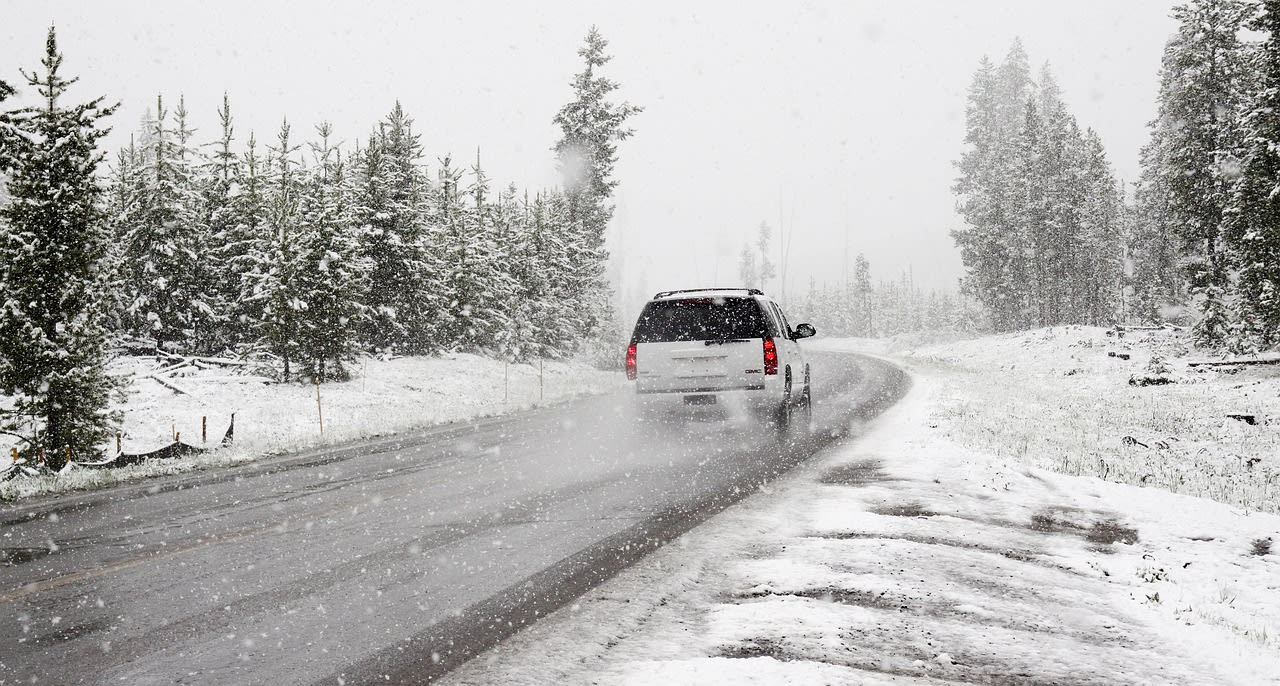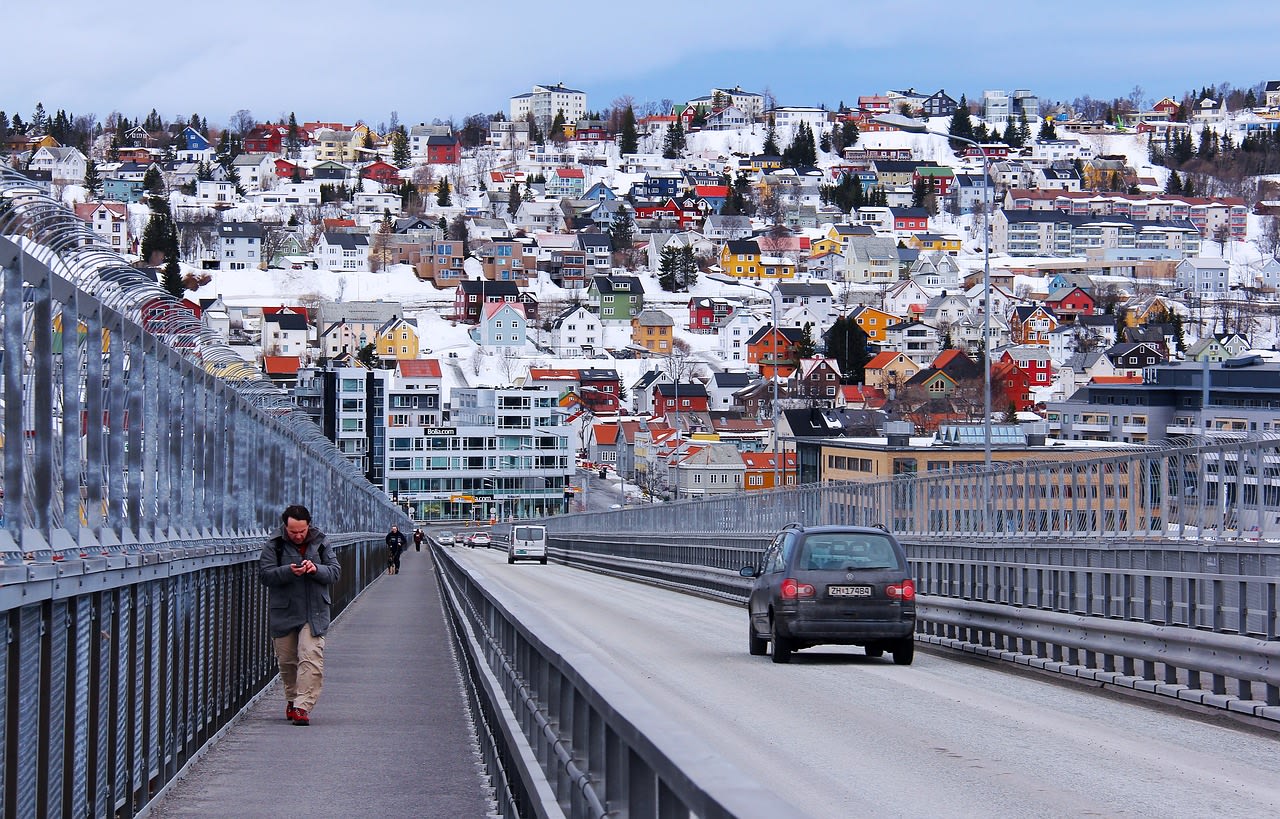How to visit Lapland?

It's true that Lapland is a rather remote part of Europe, but it's still accessible by various means of transport! To help you plan your next trip north, we've put together a summary of the different options available for getting to Lapland and getting around once you're there!
How to visit Lapland?
Lapland is the region in northern Europe, largely beyond the Arctic Circle. It covers several countries, including 3 European countries, Norway, Sweden and Finland. Today, Lapland is a must-see destination for winter activities and family visits to Father Christmas.
Before planning your trip, you simply need to decide which Lapland to visit. As the region stretches across 3 countries, you can choose the country that interests you most, between Norway, Sweden or Finland. In any case, you can be sure of one thing: you'll enjoy the omnipresence of nature and the best outdoor winter activities. If you're still not sure which Lapland to visit, take a look at our article on the subject.
Although Lapland is a vast and isolated region, it is nevertheless well served. So when it comes to choosing how to get to Lapland, the choice is yours. Depending on the time you have available, your preferences or your convictions, you can visit Lapland by train, car, bus or plane. Once there, you also have several options for getting around this great wilderness.
How do I get to Lapland?
First of all, you need to get to Lapland. There are several ways of doing this.
By plane: for a quick trip

Travelling to Lapland by plane is probably one of the most popular options. As air travel is fast, it allows holidaymakers to spend more time in their destination and is generally quite practical and inexpensive. Nevertheless, flying is still the most polluting form of transport.
There are several airports in Lapland, the main ones being Rovaniemi in Finland, Tromsø in Norway and Kiruna in Sweden. There are also Kittilä and Ivalo airports in Finland and Alta airport in Norway. Generally, there are no direct flights to these airports, so you have to go via a major European city such as Helsinki, Stockholm or Oslo.
As far as the budget is concerned, it is generally possible to find tickets that are not too expensive, provided you plan your trip well in advance. In winter, ticket prices can quickly rise because of the high demand during this period. On average, you should expect to pay between €150 and €350 for a return journey from a European capital in the low season (spring, autumn, summer) and €300 to €600 in the high season (winter). Of course, these prices depend on a large number of factors, and by booking in advance, air travel remains an economical option.
By train: to admire the scenery

Travelling by train is the ideal way to relax, admire the scenery and take your time. If you can, we strongly advise you to choose this means of transport to experience a more immersive and environmentally-friendly journey. The main disadvantage of travelling by train is that it's long and rather expensive. On average, it would cost around €100 to travel from Oslo, Stockholm or Helsinki to Lapland, depending on the type of seat you choose, the season and when you book.
If you want to travel to Lapland by train, there are several night trains. While these may not allow you to enjoy the scenery, they do offer a compromise between saving time and saving a night in a hotel. In Finland, for example, there is a line between Helsinki and Rovaniemi. In Sweden, a train can take you from Stockholm to Kiruna. Finally, to go to Norwegian Lapland, you can also leave Stockholm and take the night train to Narvik or leave Olso and go to Bodø, a town just south of the Arctic Circle. If you want to admire the view, take your train ticket during the day and that's it!
As with flying, you have to pass through the Nordic capitals to reach Lapland by train. In fact, you can also choose to combine train and plane by first flying to a capital city and then taking a train to travel north. From the comfort of your seat on the train, you'll be amazed by the beauty of the scenery even before you arrive in Lapland!
By car: for greater freedom
The car is the best means of transport in terms of freedom. You drive, so you can make your own decisions about the itinerary, breaks and stops. However, the budget for travelling by car is also much higher. Of course, this depends on where you're travelling from, but with car hire and high petrol prices in the region, it's generally an expensive option. For example, car hire can cost between €30 and €150 per day in Finland, depending on the vehicle, the season and where you pick up and drop off. Prices are similar in Norway and Sweden.
The great freedom offered by travelling by car means that you can set off from anywhere in Europe and get to Lapland fairly easily, although the journey can be long. Depending on where you start from, you may need to take a ferry to Norway, Sweden or Finland. As you get closer to the North, you'll also need to adapt to driving in increasingly extreme winter conditions.
By bus: for a cheap journey
Lapland is not a cheap destination. However, certain options, such as travelling by bus, can reduce the cost of your journey. The bus is probably the cheapest option for getting to Lapland, but it also takes the longest. For example, the bus journey from Helsinki takes between 12 and 14 hours and costs around €80.
However, the bus is generally not very practical as there are few direct routes. The only direct routes are Helsinki - Rovaniemi and Stockholm - Kiruna. For the rest, you'll have to use a combination of trains and buses, or even other forms of transport. Adding changes to the journey time can easily make bus travel more difficult to organise. If you stop on the way and really take your time, it may be fine, but if you're not interested, depending on the season and the route you want to take, a train ticket may be more cost-effective.
Getting around Lapland
Once you arrive in Lapland, you can either keep the same means of transport if you were travelling by car, public transport or plane, or change to visit the country in a different way.
A. The car: to reach remote areas

The car is an excellent means of transport for reaching the most remote areas of Lapland. If you're planning to enjoy winter activities off the beaten track in Lapland, this is the perfect option for you. Despite its high cost, travelling by car is the best way to explore freely and at your own pace.
If you're planning to drive in Lapland, there are a few rules you need to know to cope with the weather and the isolated nature of the region. If you are used to driving in winter conditions, this will be less of a problem for you. Nevertheless, for many tourists, driving in Lapland is a very different experience from their everyday lives. Of course, some of these problems will be non-existent if you visit Lapland in summer.
In winter, conditions on Lapland's roads can quickly become extreme. Lapland's roads are often covered in snow or ice, even in the middle of the day. With winter temperatures dropping as low as -30°C, you'll also need to be warmly dressed in case you get stuck somewhere. Finally, it's not uncommon for reindeer to cross the road, so you'll need to be aware of the local wildlife.
To visit Lapland by car, your vehicle should be fitted with winter tyres, which are compulsory from November to April, or studded tyres for better grip on icy roads. It's also a good idea to have snow chains with you, in case you want to venture out onto an uncleared road. Make sure that the vehicle's heating is working properly and that the windscreen washer fluid is frost-proof, and you'll be ready to go! Once on the road, don't hesitate to stay below the maximum speed limit, keep your distance and anticipate any braking. It's also a good idea to keep your headlights on at all times. Finally, to manage the isolation, don't hesitate to fill up as soon as possible and keep a GPS and a road map with you in case you run out of technology.
B. Public transport: linking the main cities

If you're planning to visit more than one town in Lapland, public transport can help you connect them. Trains and buses can offer economical options and avoid driving in the snow if that doesn't reassure you. However, transport offers less flexibility and services are less frequent. Sometimes you have no choice but to combine bus and train services.
In particular, there are a number of regional buses linking Lapland's main towns and small villages. For example, if you're in Rovaniemi, you can take a bus to Tromsø(Arctic Route) or Karasjoki in Norway, or to Haparanda in Sweden. From these destinations, new options will be available to continue your journey in Lapland.
The train is another option for travelling from one Lapland town to another. There is a line that runs from Narvik to Abisko and on to Kiruna. The line continues to Gällivare, Boden and then Luleå. The crossing from Narvik to Luleå is therefore well served, but there is no line in its own right in Norwegian Lapland, only this arrival or departure station in Narvik. However, the lines are more scattered in Finland, with only one line between Kemijärvi and Rovaniemi, itself connected to a line linking Kolari and Oulu.
C. Internal flights: to save time
As the distance between southern Norway, Sweden and Finland and their northern regions is rather great, it is quite common for people living in the region to take internal flights. With a well-developed air service and affordable prices, this is a practical and quick option. Travelling to Lapland by plane allows you to avoid certain geographical obstacles, such as fjords or simply isolated regions poorly served by other means of transport.
Internal flights are a great way to make the most of your time on the ground. However, if you have the opportunity, we recommend that you take the car or public transport for a more immersive experience.
In conclusion, despite its isolated geographical location, Lapland remains an accessible region served by several means of transport. This means you can choose between these options according to your preferences or the time you have available. Now that you know how to get to Lapland, you may still be unsure about which season to visit? Don't worry, there's no right or wrong answer, just as there is for the means of transport. It's up to you to decide when you'd like to visit Lapland!